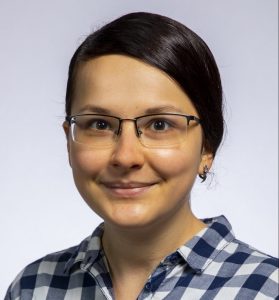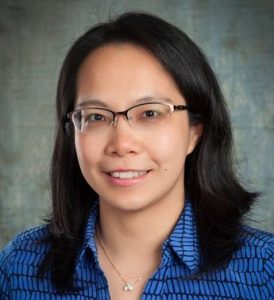
Nov. 14, 2022
MUIDSI Dissertation Defense: IDENTIFICATION OF IMMUNE-RELATED GENE SIGNATURES TO EVALUATE IMMUNOTHARAPEUTIC RESPONSE IN CANCER PATIENTS USING EXPLORATORY SUBGROUP DISCOVERY
Phenotypic and genotypic heterogeneity are characteristic features of cancer patients. To tackle patients’ heterogeneity, immune checkpoint inhibitors (ICIs) represent one of the most promising therapeutic approaches. However, approximately 50% of cancer patients that are eligible for treatment with ICIs will not respond well, which motivates the exploration of immunotherapy in combination with either targeted treatments or chemotherapy. Over the years, multiple patient stratification techniques have been developed to identify homogenous patient subgroups, although, matching patient subgroup to treatment option that can improve patients’ health outcome remains a challenging task. We extend our exploratory subgroup discovery algorithm to identify patient subpopulations…

Nov. 8, 2022
Exploratory analysis of the use of Telemedicine in Primary care
This research is primarily focused on use of Telemedicine in Primary care and how that usage changed over time especially COVID 19. In this research, we did a scoping review to see how Primary care adapted Telemedicine during COVID-19 and what are some of the successes or challenges with the adaptation. In this research, we also did utilization review of Telemedicine in Primary care and Specialty care. We also compared how the utilization differs before and after COVID-19. Results indicate that though telemedicine was in use before COVID-19, it was primarily in Specialty care. Primary Care was a rare user.

Nov. 8, 2022
Identifying Gene-Gene Interactions Protective Against Autism Using Contrast Mining
Many genetic variants have been linked with the development of ASD. ASD is also known to be more prevalent in males than in females. The underlying mechanism for this difference is unclear. The polygenic nature of the genetic component of ASD makes studying potential mechanisms difficult if the significance of variants is assessed independently, as their effects may interact. Most research has focused on the pathogenic effect of certain genetic variants. However, genetic variants associated with a reduced risk of developing ASD also exist and may provide new clues regarding the mechanism for the difference in ASD between sexes. We…

Oct. 25, 2022
Early Warning of Health Changes for Older Adults: Implementing a Gaussian Mixture Components Clustering Algorithm to Detect Outliers in Daily Multi-feature Sensor Data Streams
In this case study, we evaluate the implementation of Sequential Possibilistic Gaussian Mixture Models (SPGMM) for accurately modeling changes in feature streams antecedent to known health events, thereby providing predictive relevance for clinical use, including identifying the preprocessing requirements for streams prior to algorithm input. SPGMM is a change detection algorithm developed for use in online data stream processing applications where feature vectors are introduced sequentially as inputs for iterative clustering. SPGMM is comprised of two components: the Sequential Possibilistic One-Means (SP1M) algorithm for generating the initial clusters (Gaussian mixtures), combined with the Gaussian Mixture Model (GMM), which defines how…

Oct. 25, 2022
Supporting Population Health Outcomes Studies Using a Framework of Social Determinants Linked EHR Data
Population health outcomes research based on social determinants of health (SDoH) needs to link electronic health record (EHR) data with social determinants using Identifiable information (patients’ addresses). The connectivity expects additional computational load, privacy risk, and storage for each research. A Data Lake that facilitates research data can provide a framework for SDoH-connected EHR data and cohort phenotyping algorithms. For this study, a framework was developed by staging Census Bureau American Community Survey (ACS), Area Deprivation Index (ADI), and Center for Medicare and Medicaid (CMS) defined phenotyping algorithms for 27 chronic diseases. From 1,673,145 patients of the University of Missouri’s…

Oct. 14, 2022
Alzheimer’s disease mitigation: AI, neuroimaging and gut-brain axis
Alzheimer’s disease (AD) is the most common form of dementia and currently there are no effective therapeutics to reverse the course once the clinical symptoms have developed. Early identification of risk factors for AD and effective interventions thereof would be critical to mitigate AD pathological development and prevent the onset of clinical symptoms. In the presentation, I will demonstrate how we used artificial intelligence approach to identity the risk factors from clinical data, and determined the effectiveness of pharmacological and nutritional interventions in an animal model with human APOE4 genes, the strongest genetic risk factor for AD. Future direction on…

Sep. 6, 2022
MUIDSI DISSERTATION DEFENSE: Explainable Artificial Intelligence To Stratify Pan-Cancer Patients For Immune Checkpoint Inhibitor Decision Making
Immune checkpoints are a normal part of the immune system. It engages when proteins on the surface of immune cells called T cells recognize and bind to partner proteins on other cells, such as some tumor cells. Immune based therapies such as ICIs work by blocking checkpoint proteins from binding with their partner proteins. This prevents the “off” signal from being sent, allowing the T cells to kill cancer cells. One such drug act against a checkpoint protein called PD-1 or its partner protein PD-L1. Some tumors turn down the T cell response by producing lots of PD-L1. Recent years…

Sep. 6, 2022
Overhead imagery training data quality control: Methods for deep feature label anomaly detection
Spatial analysis of large remotely-sensed imagery (RSI) training datasets for within-class variation and between-class separability is key to uncovering issues of data diversity and potential bias, not just when vetting datasets for usage, but also during the actual dataset creation stage. Project managers of complex imagery annotation campaigns have a largely unaddressed need for tools that continuously monitor for data labeling anomalies which may be due to human bias or error. This presentation outlines a deep-feature change detection approach using Geospatial Fréchet Distance (GFD) for automatically measuring significant regional changes in image label appearance (i.e., within-class variance). An experimental setup is designed…

Sep. 6, 2022
Biological pathways as graphs: comparison of select similarity methods
We extracted biomedical pathways from 47 publications related to non-small cell lung cancer (NSCLC) and mergedthem into a Neo4j graph database. With this graph serving as ground truth for comparing to other pathways that were extracted from other publications, we investigated several methods of calculating graph similarity. Unlike ontologies and engineered data sets that have uniform representations of data objects, graphs extracted from unstructured texts haveto be compared as text-described entities first, and by using common graph similarity methods second. In this work, we discuss ways of comparing biological graphs composed of text-described entities, both on the node level and on the graph level. Nodes, their adjacent neighbors and their relationships that contain nominal properties (features) areconverted into relational measures by being compared to their counterparts in another graph, then aggregated into a single measure. Also, a method of searching for similar nodes is described that can be used to locate potential mislabeled twin…